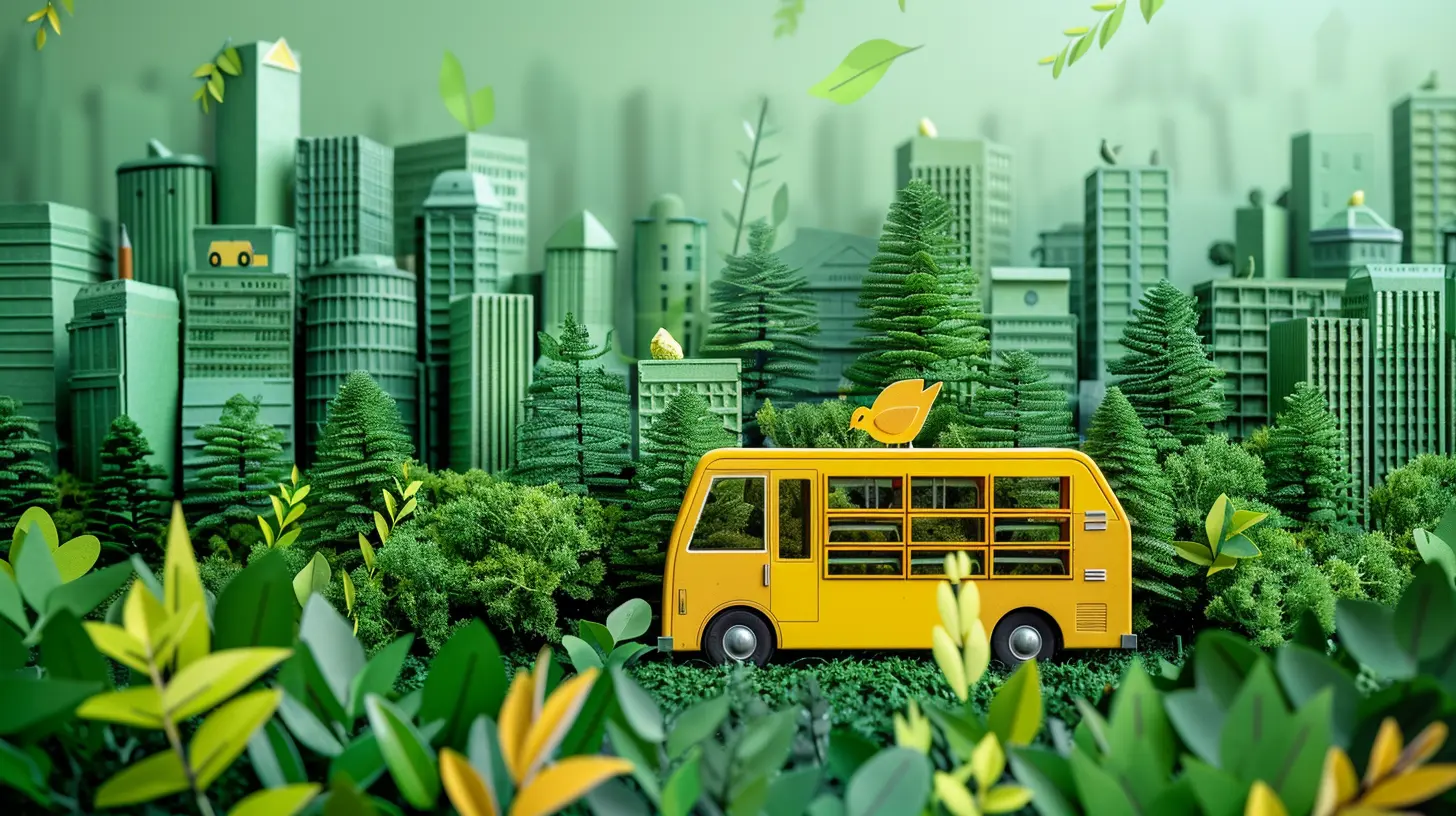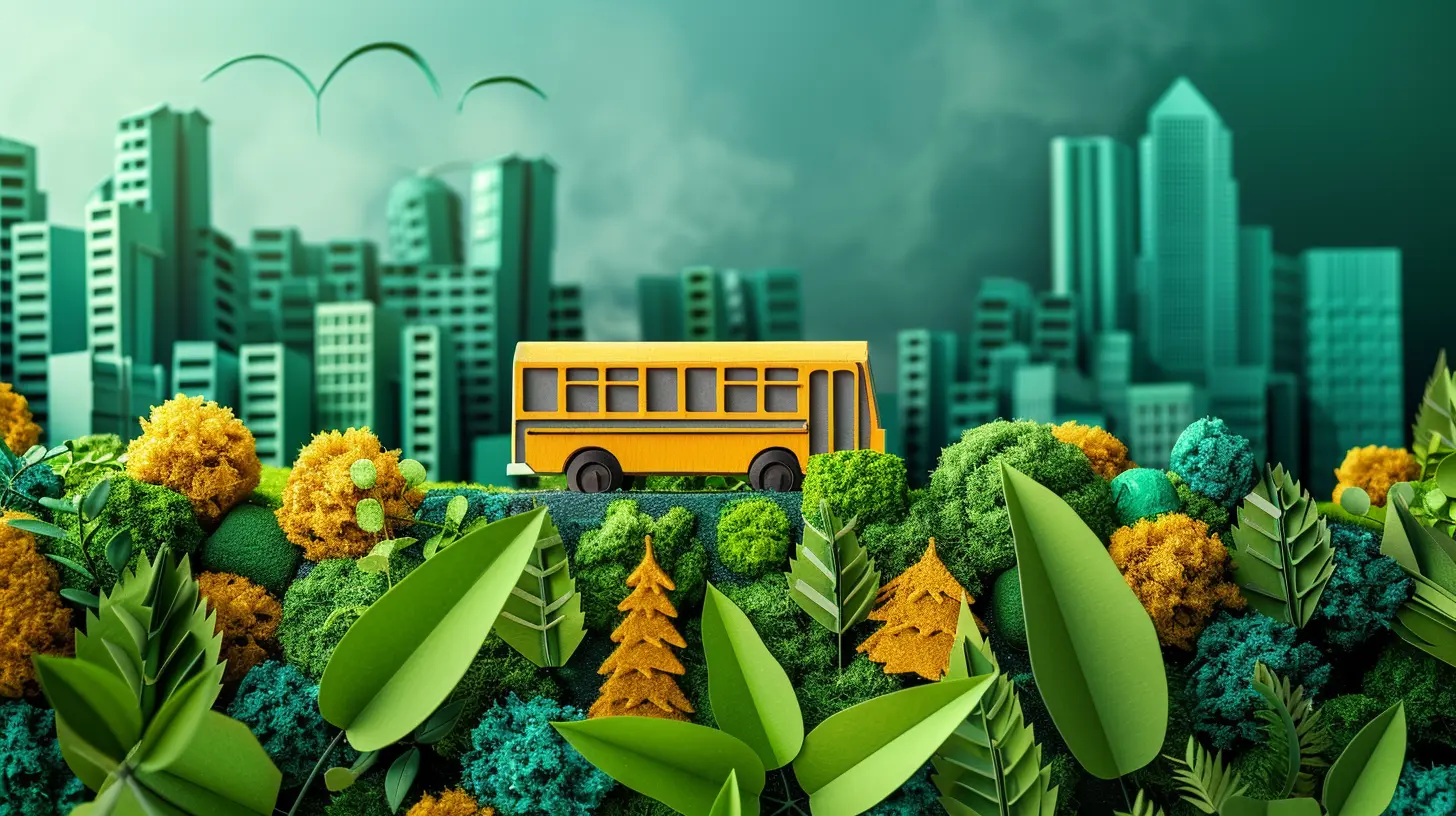How to Introduce Sustainable Transportation Concepts in Schools
15 November 2025
Sustainable transportation is more than just a trend—it's a necessity. With climate change accelerating and urban congestion worsening, it’s crucial to educate the next generation about responsible commuting. And where better to start than in schools?
But how do we introduce sustainable transportation concepts in a way that truly sticks? It’s not enough to just hand students a pamphlet on eco-friendly travel. To make a lasting impact, schools must incorporate sustainability into their curriculum, school policies, and daily routines.
In this guide, we’ll explore engaging ways to teach students about sustainable transportation and how to make it a core part of school culture. 
Why Schools Should Teach Sustainable Transportation
Before diving into how, let's talk about why sustainable transportation education matters in schools.1. Reduces Carbon Footprint
Transportation is one of the biggest contributors to greenhouse gas emissions. Teaching students about eco-friendly commuting options—like biking, walking, and public transit—can significantly lower their future carbon footprint.2. Promotes Healthy Lifestyles
We live in an era where screen time has replaced outdoor play. Encouraging walking or cycling to school not only reduces emissions but also promotes physical activity, leading to healthier students.3. Develops Responsible Citizens
Sustainability isn’t just about the environment; it’s also about social responsibility. By educating students early, we’re shaping conscious adults who will make sustainable choices in the future.
How to Introduce Sustainable Transportation in Schools
Now that we understand the “why,” let’s dive into the “how.” Schools can integrate sustainable transportation concepts in multiple ways—curriculum updates, hands-on projects, and even school-wide initiatives.1. Incorporate Sustainability into the Curriculum
The first step is weaving transportation sustainability into everyday learning. Instead of treating it as a side topic, integrate it into subjects like science, geography, and even math.- Science Classes: Teach students about carbon emissions, air pollution, and how transportation affects climate change.
- Geography Lessons: Discuss urban planning, how cities are designed for walkability, and the benefits of public transport.
- Math Problems: Have students calculate their carbon footprint based on different modes of transportation.
Let’s face it—kids retain information better when it’s part of their daily lessons rather than a one-off lecture.
2. Organize 'Walk or Bike to School' Challenges
Nothing engages students like a friendly competition. Schools can create incentive-based programs where students earn points for walking, biking, or carpooling to school.- Offer small rewards (stickers, certificates, or extra playtime) to encourage participation.
- Get parents involved by organizing safe walking routes or “bike buses” where groups of kids bike together.
- Create leaderboards showcasing the top eco-commuters in the school.
A simple initiative like this can turn sustainable commuting into a fun and rewarding habit.
3. Improve School Infrastructure for Safe Commuting
It’s not enough to ask students to walk or bike—we also need to ensure they can do so safely. Schools should work with local authorities to develop:- Bike racks: If students are encouraged to cycle, they need secure places to park their bikes.
- Safe crossing zones: More crossing guards and pedestrian-friendly areas make walking safer.
- Dedicated drop-off points: To reduce congestion, schools can set up pick-up/drop-off zones slightly away from the entrance, encouraging a short walk.
Even small changes in infrastructure can make a big difference in promoting sustainable commuting.
4. Teach Public Transportation Skills
Many students rely on school buses or private cars simply because they’re unfamiliar with public transport. Schools can bridge this gap by:- Organizing field trips where students navigate bus routes or train systems with teacher guidance.
- Teaching students how to read transit maps and use transport apps.
- Encouraging older students to use public transportation for school trips instead of private vehicles.
Mastering public transit from a young age fosters independence and long-term sustainable habits.
5. Introduce Carpooling Programs for Parents
Let’s be real—many parents rely on cars for convenience. While completely eliminating car use isn’t realistic, schools can at least reduce the number of vehicles by promoting carpooling.- Set up a carpool database where parents can find nearby families to share rides.
- Assign carpool lanes at drop-off points to incentivize shared rides.
- Offer priority parking spots for carpooling families.
With a well-organized carpool system, fewer cars mean less pollution, reduced traffic congestion, and even stronger community bonds.
6. Partner with Local Environmental Organizations
Collaboration amplifies impact. Schools can team up with environmental organizations, government agencies, or cycling groups to provide workshops, resources, and professional insights.- Invite guest speakers to discuss the importance of sustainable transportation.
- Organize community clean-up events where students pick up litter along local walking routes.
- Apply for government grants that support eco-friendly school transportation initiatives.
Leveraging external resources helps schools create well-rounded, effective programs.
7. Implement "No-Idling" Zones
Did you know that idling cars outside schools contribute massively to air pollution? Schools can introduce strict "no-idling" policies near drop-off zones to reduce emissions.- Install signs reminding parents to turn off engines while waiting.
- Educate families about the impact of vehicle idling on air quality.
- Have student-led initiatives where kids remind adults about these rules—sometimes, a little peer pressure works wonders!
Even a single-minute reduction in idling can make a substantial difference.
8. Use Gamification to Keep Engagement High
Kids love games. Why not use that to teach them about sustainable transport?- Launch an interactive "Eco-Commuter" mobile app where students track their sustainable travel choices.
- Design board games or online quizzes about transportation sustainability.
- Create a school-wide challenge where classes compete to reduce carbon footprints.
When learning feels like play, kids are far more likely to embrace sustainable habits. 
The Role of Teachers and Parents
Sustainability education isn’t just the responsibility of schools—it’s a team effort. Teachers and parents both play a crucial role in reinforcing eco-friendly habits.For Teachers:
- Set an example by using public transport, carpooling, or biking to school.- Use storytelling to make sustainability concepts relatable.
- Encourage class discussions on transportation and its effects on the planet.
For Parents:
- Walk or bike with kids whenever possible.- Discuss transportation choices at home and involve kids in eco-friendly decisions.
- Be supportive of school initiatives promoting sustainable commuting.
When educators and parents work together, sustainability becomes a deeply ingrained value rather than just another school subject. 
Final Thoughts
Introducing sustainable transportation concepts in schools isn’t just about reducing emissions—it’s about shaping a greener future. By integrating lessons into the curriculum, encouraging eco-friendly commuting habits, and fostering a culture of sustainability, schools can empower students to make responsible choices that benefit both the planet and their well-being.The key is to start small and stay consistent. Whether through walk-to-school challenges, improved infrastructure, or fun gamification, every effort counts. And who knows? The sustainable habits students pick up today might just pave the way for a cleaner, healthier tomorrow.
all images in this post were generated using AI tools
Category:
Environmental EducationAuthor:

Bethany Hudson

